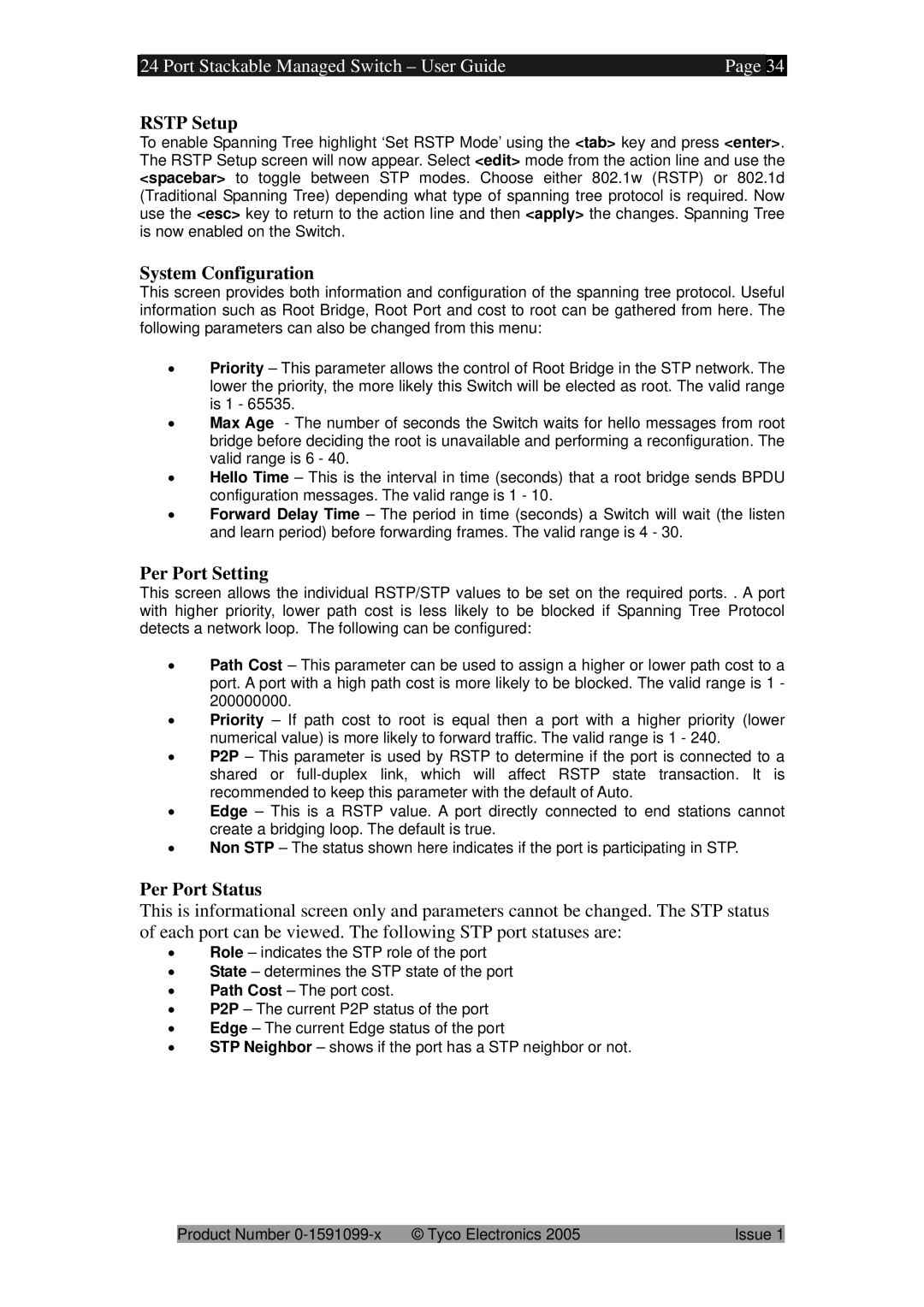24 Port Stackable Managed Switch – User Guide | Page | 34 |
RSTP Setup
To enable Spanning Tree highlight ‘Set RSTP Mode’ using the <tab> key and press <enter>. The RSTP Setup screen will now appear. Select <edit> mode from the action line and use the <spacebar> to toggle between STP modes. Choose either 802.1w (RSTP) or 802.1d (Traditional Spanning Tree) depending what type of spanning tree protocol is required. Now use the <esc> key to return to the action line and then <apply> the changes. Spanning Tree is now enabled on the Switch.
System Configuration
This screen provides both information and configuration of the spanning tree protocol. Useful information such as Root Bridge, Root Port and cost to root can be gathered from here. The following parameters can also be changed from this menu:
•Priority – This parameter allows the control of Root Bridge in the STP network. The lower the priority, the more likely this Switch will be elected as root. The valid range is 1 - 65535.
•Max Age - The number of seconds the Switch waits for hello messages from root bridge before deciding the root is unavailable and performing a reconfiguration. The valid range is 6 - 40.
•Hello Time – This is the interval in time (seconds) that a root bridge sends BPDU configuration messages. The valid range is 1 - 10.
•Forward Delay Time – The period in time (seconds) a Switch will wait (the listen and learn period) before forwarding frames. The valid range is 4 - 30.
Per Port Setting
This screen allows the individual RSTP/STP values to be set on the required ports. . A port with higher priority, lower path cost is less likely to be blocked if Spanning Tree Protocol detects a network loop. The following can be configured:
•Path Cost – This parameter can be used to assign a higher or lower path cost to a port. A port with a high path cost is more likely to be blocked. The valid range is 1 - 200000000.
•Priority – If path cost to root is equal then a port with a higher priority (lower numerical value) is more likely to forward traffic. The valid range is 1 - 240.
•P2P – This parameter is used by RSTP to determine if the port is connected to a shared or
•Edge – This is a RSTP value. A port directly connected to end stations cannot create a bridging loop. The default is true.
•Non STP – The status shown here indicates if the port is participating in STP.
Per Port Status
This is informational screen only and parameters cannot be changed. The STP status of each port can be viewed. The following STP port statuses are:
•Role – indicates the STP role of the port
•State – determines the STP state of the port
•Path Cost – The port cost.
•P2P – The current P2P status of the port
•Edge – The current Edge status of the port
•STP Neighbor – shows if the port has a STP neighbor or not.
Product Number | © Tyco Electronics 2005 | Issue 1 |
